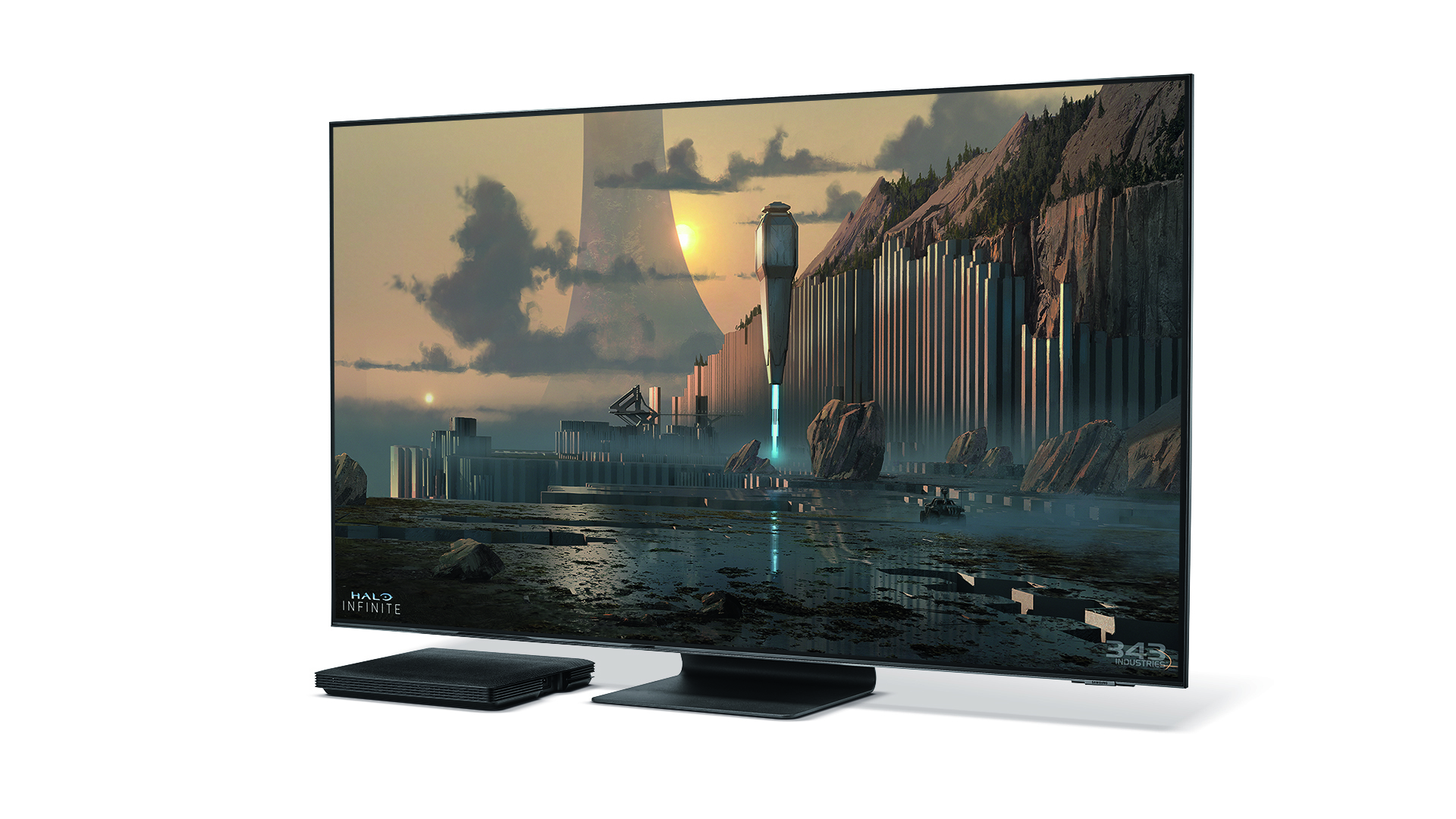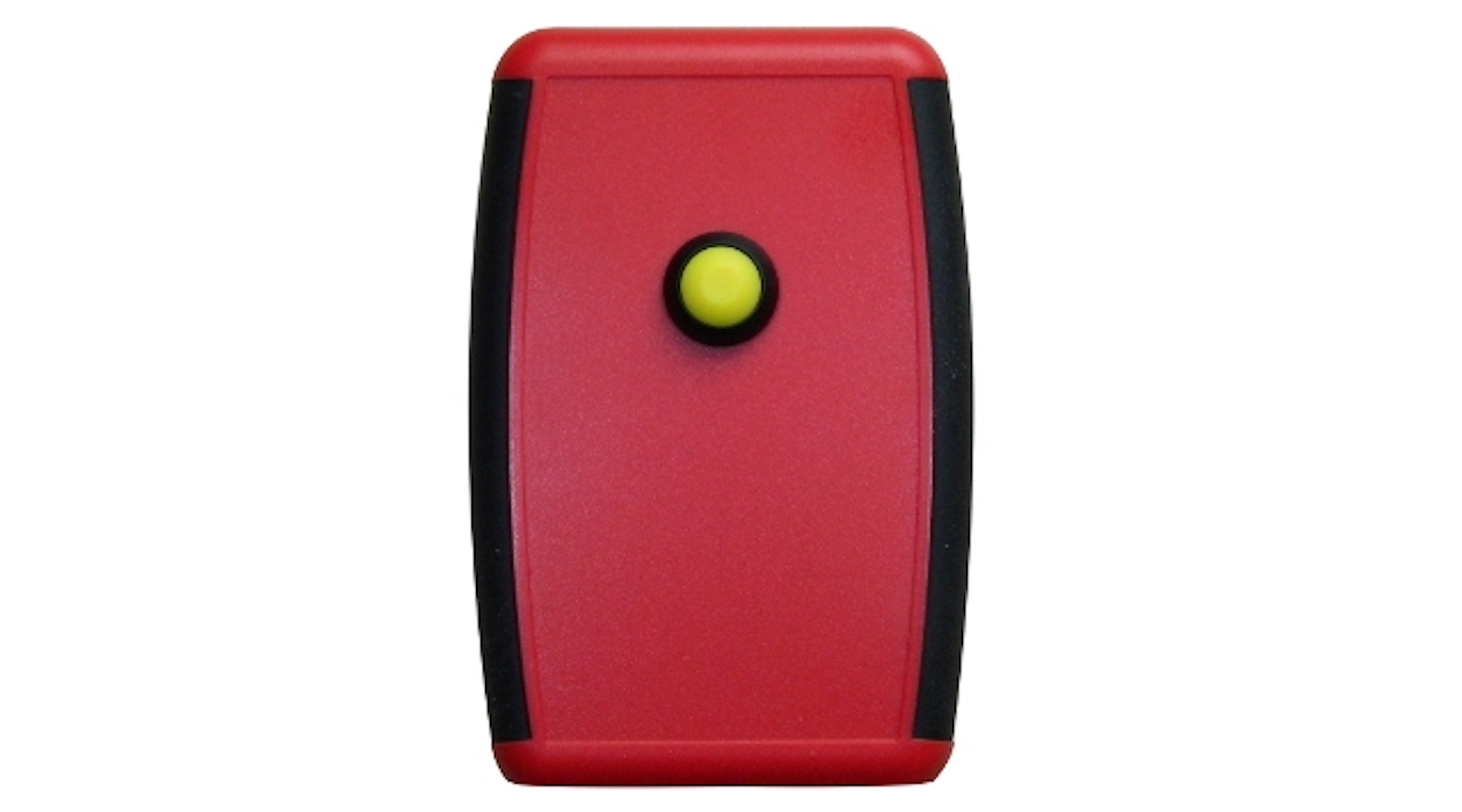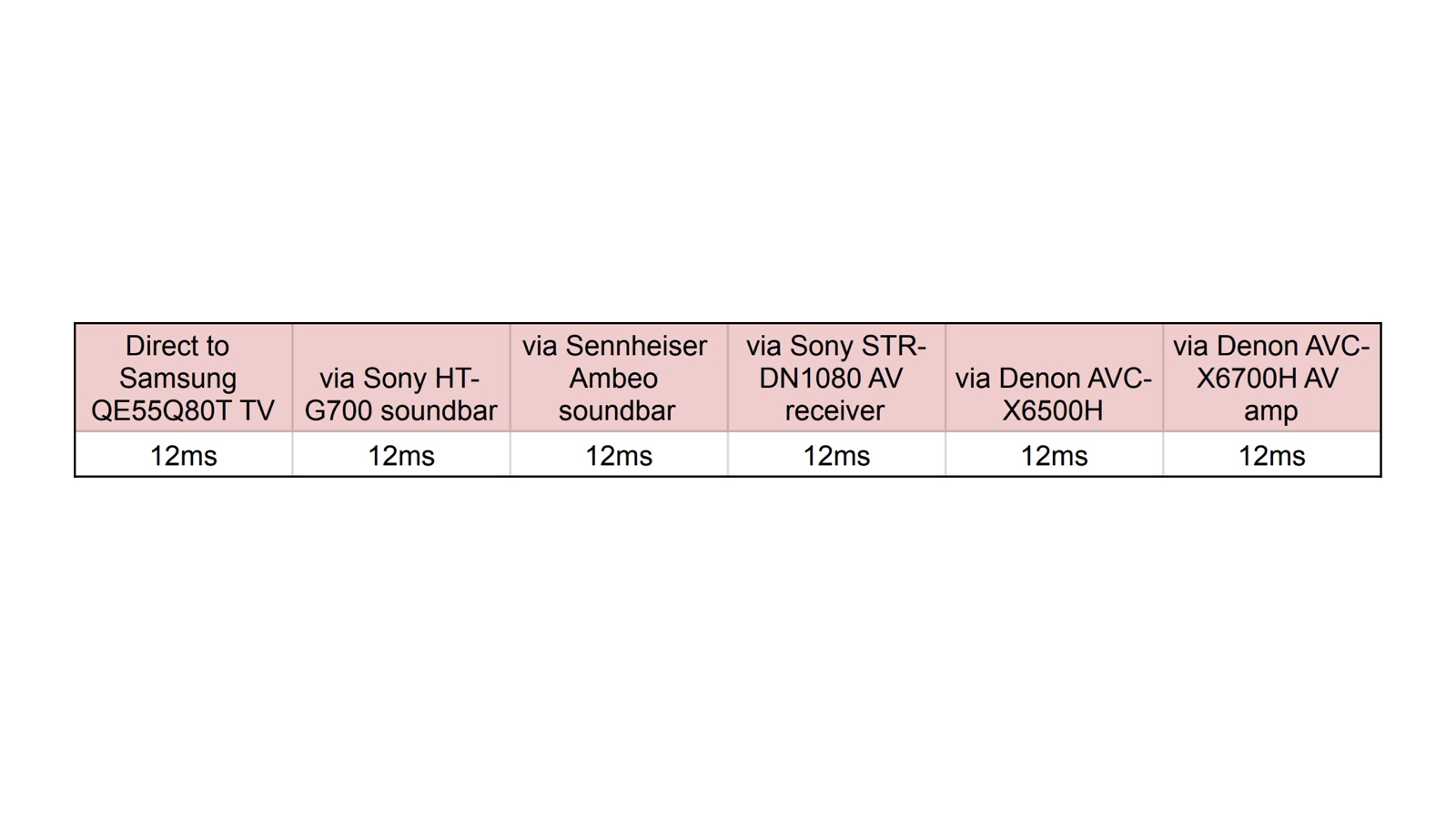Do AV receivers and soundbars add input lag?
Is your home cinema set-up making your gaming input lag worse?

Input lag is a hot topic these days. Gamers across the globe use input lag as an excuse for getting spanked in online deathmatches, and manufacturers are engaged in an arms race to deliver the lowest possible input lag figures.
At the same time, games consoles are delivering a more cinematic experience than ever before, particularly in terms of sound, and many gamers are quite rightly taking advantage of that by connecting their machines to a soundbar or even an AV amplifier. The question, though, is whether placing an audio device in the chain between the console and TV lengthens that signal path and increases input lag. And, if it does, is there an alternative way to set everything up?
With our trusty Leo Bodnar input lag tester, we set out to find out.
What is input lag?
First things first, though – just what the heck is input lag anyway?
Put simply, input lag is the time it takes for the button presses on a gamepad to appear as actions on the screen. A large amount of lag means you're always behind the action, and that's a recipe for disaster in fast-paced games, not to mention a frustrating and discombobulating experience all round.
In truth, while a lot of input lag certainly is very annoying, a little too much emphasis is placed on the differences between very low scores. Anything under about 40ms is simply imperceptible to almost everyone, and the insistence by some that they can tell the difference between 10ms and 12ms is deeply suspicious.
That said, by having the lowest input lag possible, you eradicate that as a source of defeat. What's more, if you've forked out for a TV with very low lag, the last thing you want to do is hamstring it in any way. And if you've got a TV that's already a bit laggy, you certainly don't want to make it any worse.
The test

The test is very simple. The Leo Bodnar device (pictured above) outputs a flashing signal via HDMI that travels into the TV and out onto the screen where it can then be analysed by an integrated sensor. The Leo Bodnar can then measure the time that elapses between when the signal is produced at one end and scanned at the other.
In the first instance, we connected the Leo Bodnar directly to our TV to get its baseline input lag. We then connected five different AV components between the Leo Bodnar device and the TV, one at a time, to see how much of an impact each had on the original input lag score.
The TV we used for the test was the Samsung QE55Q80T, one of the best-value gaming TVs of 2020. The AV components we selected were the Sony HT-G700 and Sennheiser Ambeo soundbars, the Sony STR-DN1080 entry-level AV receiver and the Denon AVC-X6500H and AVC-X6700H flagship AV amps. We took multiple measurements via every one of each device's HDMI inputs just in case some were laggier than others – they weren't.
It's worth noting that we're using the 1080p version of the Leo Bodnar Input Lag Tester. That means that, because the TV then has to upscale the signal to suit its native 4K resolution, it adds a very small amount of additional input lag. If you were to use the newer, 4K version of the Leo Bodnar Input Lag Tester, you'd find the measurements would universally be slightly lower.
We've also rounded the results to the nearest millisecond as there's regular fluctuation of 0.1-0.2ms, even when testing the same input in the same way multiple times and we don't want the results to look more different than they really are.
The results

Well, that's not exactly what we expected. Other than the aforementioned fluctuations of 0.1-0.2ms that we saw regularly, the input lag score simply didn't change when the signal was passed through any of our selected AV components. On the one hand, that makes the experiment feel like a bit of an anti-climax but, on the other, it's great news: you can run your console through your soundbar or AV receiver with little chance of it impacting performance. That means better quality entertainment without impacting on your gameplay.
There are two major caveats, though. We tested only a small number of devices and it's obviously possible that there are some soundbars and AV amps out there that will add input lag. If you suspect that might be the case in your system, try connecting your console directly to your TV to see if the gaming experience feels more responsive. If it does, you could then use ARC/eARC (or optical) to get your console's sound from your TV to your AV component.
The other big caveat is that all of the devices we used were, where available, set to pass-through mode. In other words, they were tasked with simply passing the signal from the Input Lag Tester to the TV without doing any processing.
In the case of most soundbars, there's no alternative mode, but AV amps and receivers routinely have modes designed to process, convert and/or upscale the signal from your source devices before outputting to your TV, and these can have a big effect on input lag.
For example, when we enabled the 'Video Conversion' option on the Denon AVC-X6500H, input lag jumped from the standard 12ms to around 32ms. As mentioned previously, that's still fast enough to be imperceptible to most people, but the processing of other AV receivers may well add more lag than our Denon. What's more, having your receiver process the signal from your console is highly unlikely to convey any picture quality benefits.
In short, you should avoid having your AV device do any processing of the picture from your console. Stick with that and input lag should remain just as low as if your console was connected directly to your TV.
MORE:
Get the lowest input lag with one of the best gaming TVs
Check out our lists of the best soundbars and best AV receivers
Get the What Hi-Fi? Newsletter
The latest hi-fi, home cinema and tech news, reviews, buying advice and deals, direct to your inbox.
Tom Parsons has been writing about TV, AV and hi-fi products (not to mention plenty of other 'gadgets' and even cars) for over 15 years. He began his career as What Hi-Fi?'s Staff Writer and is now the TV and AV Editor. In between, he worked as Reviews Editor and then Deputy Editor at Stuff, and over the years has had his work featured in publications such as T3, The Telegraph and Louder. He's also appeared on BBC News, BBC World Service, BBC Radio 4 and Sky Swipe. In his spare time Tom is a runner and gamer.

